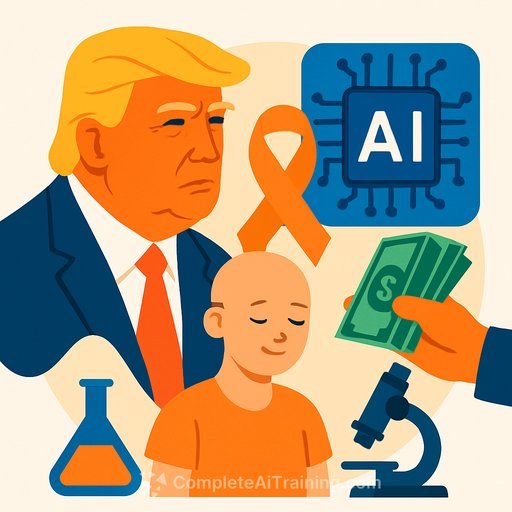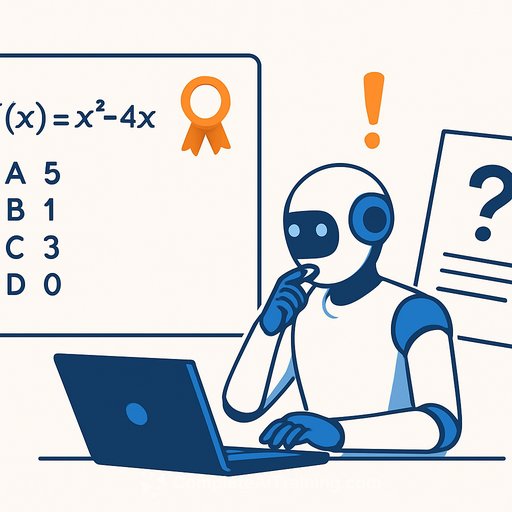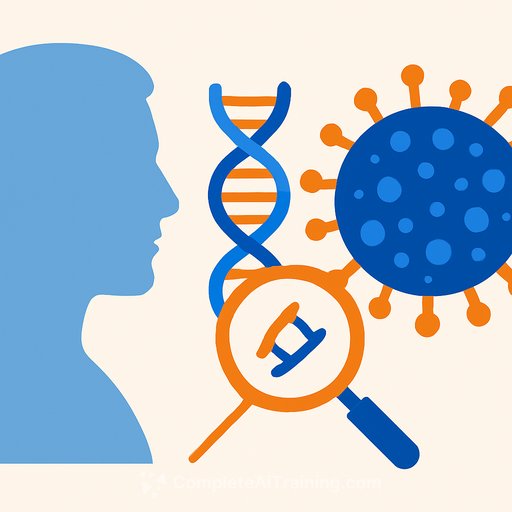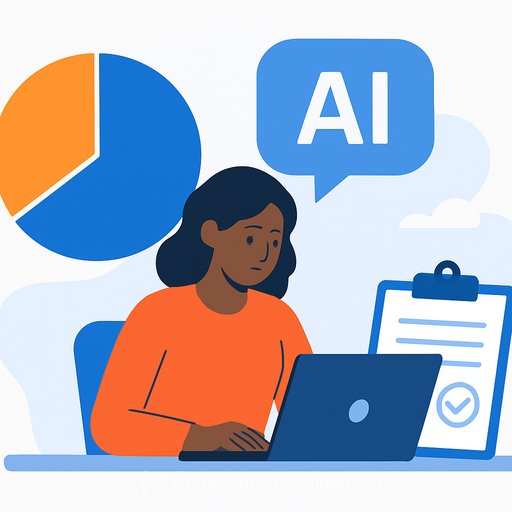AI Funding Pledge Targets Childhood Cancer: What It Means for Researchers
- $50 million executive order announced on October 2, 2025 to advance AI research against childhood cancer, doubling NIH investment in the childhood cancer data initiative.
- Nationwide data collection across pediatric, adolescent, and young adult oncology to accelerate AI-driven discovery and clinical impact.
- Move follows prior cuts to pediatric cancer research and loss of federal support for the Pediatric Brain Tumor Consortium.
- Administration signals a shift in AI governance: no nonprofit will act as a government-backed regulator; FDA has deployed internal AI for review workflows.
The announcement
President Donald Trump signed an executive order committing $50 million to AI research focused on childhood cancer. The pledge doubles the NIH's investment in a data initiative launched in his first term.
Speaking alongside pediatric cancer patients, Trump said the goal is to defeat childhood cancer and accelerate research that improves outcomes for young patients. The timing raised both hope and scrutiny across clinical and research communities.
What's funded
The order channels funds into building a national data resource: capturing clinical, genomic, imaging, and outcomes data from every child, adolescent, and young adult diagnosed with cancer in the U.S. The plan includes new grants for AI-driven methods and applications in pediatric oncology.
Integration with HHS systems is a stated priority to improve data sharing, clinical trial matching, diagnostic precision, and less toxic treatment strategies. As noted by NIH leadership during the announcement, survivorship carries heavy burdens, and better targeting can reduce long-term complications.
Context: funding cuts and concern
The move arrives after cuts to science research grants, including pediatric cancer programs. The Pediatric Brain Tumor Consortium lost federal funding in August 2025, and a more than 37% reduction was proposed for the National Cancer Institute.
Policy experts caution that reductions at NIH and NCI depress discovery most where industry will not invest. CBO estimates cited publicly suggest even a 10% cut could translate into 30 fewer drugs over 30 years and two fewer per year thereafter.
Regulatory direction: who sets the AI rules
Senior health officials criticized prior reliance on a nonprofit consortium for AI rulemaking, arguing that standards should be set by accountable public institutions. HHS leadership states that no nonprofit, think tank, or company will act as a government-backed regulator or policymaker.
At FDA, an internal AI tool is now in daily use, reportedly shrinking some scientific review tasks from days to minutes and deployed agencywide by June 30, 2025. For context on FDA's AI posture, see its public resource on AI in regulatory science: FDA: Artificial Intelligence.
Implications for science and research teams
- Position for data access: prepare to align with common data elements, ontologies, and pediatric oncology standards. Expect requirements for interoperable formats and strong metadata.
- Ethics and privacy: reinforce consent workflows for minors, re-consent at transition to adulthood, and HIPAA/HITECH compliance. Build de-identification that preserves analytic utility.
- Method development: prioritize sample-efficient learning, bias detection, interpretability, and uncertainty estimation suitable for rare subtypes.
- Clinical translation: architect real-time inference pathways for trial matching, toxicity prediction, and dose optimization with audit trails and clinician oversight.
- Partnerships: formalize multi-site data use agreements and federated or privacy-preserving analytics to bridge institutions that cannot centralize data.
- Validation and QA: pre-register analysis plans where possible, set up external validation on held-out institutions, and define performance floors by subgroup (age, race/ethnicity, tumor type).
- Funding strategy: watch for NIH FOAs linked to the expanded initiative and AI-specific solicitations; map projects to high-impact pediatric endpoints.
Where the money may land: the data backbone
Doubling investment points to scaling the childhood cancer data infrastructure-more sites, faster ingestion, and richer multi-modal data. For background on the federal effort, consult the NCI's program page: NCI: Childhood Cancer Data Initiative.
Expect pushes for standardized pipelines, portable models, and reproducible workflows across genomics, imaging, pathology, and EHR data. Teams prepared with harmonization and governance will move first.
Technical priorities shaping the work
- Multi-modal integration: link omics, radiology, pathology, and clinical notes for subtype discovery and risk stratification.
- Small-cohort learning: meta-learning, transfer learning, and synthetic data strategies with rigorous bias and drift checks.
- Safety and interpretability: pediatric-appropriate explanations, counterfactuals, and human-in-the-loop review.
- Toxicity prediction and dose tuning: models for acute and late effects to reduce lifelong complications.
- Longitudinal survivorship: models that anticipate late morbidity and support surveillance plans into adulthood.
- Fairness: subgroup performance guarantees, transparent thresholds, and monitoring across demographics and institutions.
What to watch next
- NIH and NCI funding announcements specifying data models, access terms, and review criteria for AI proposals.
- HHS guidance on interoperability, data sharing, and pediatric consents; potential templates for DUAs and IRB coordination.
- FDA's next steps on AI/ML submissions, post-market monitoring, and real-world evidence frameworks relevant to pediatrics.
- Budget signals from Congress affecting NIH/NCI toplines and continuity for programs like pediatric brain tumor networks.
- Public dashboards for program metrics: sites onboarded, datasets ingested, trials matched, and clinical endpoints moved.
Risks and constraints
Data governance for minors is complex, and re-identification risks rise with multi-modal data. Transparent access tiers, audit logs, and proven de-identification are essential.
Methodologically, small and imbalanced cohorts demand careful validation and external replication. Resource limits-compute, personnel, and secure infrastructure-could bottleneck progress if broader funding remains uncertain.
Bottom line
An additional $50 million and a clear signal on AI policy create momentum for pediatric cancer research. Teams that align data standards, ethics, and translation pathways now will be ready to turn this funding into measurable clinical gains for children and survivors.
Your membership also unlocks:






